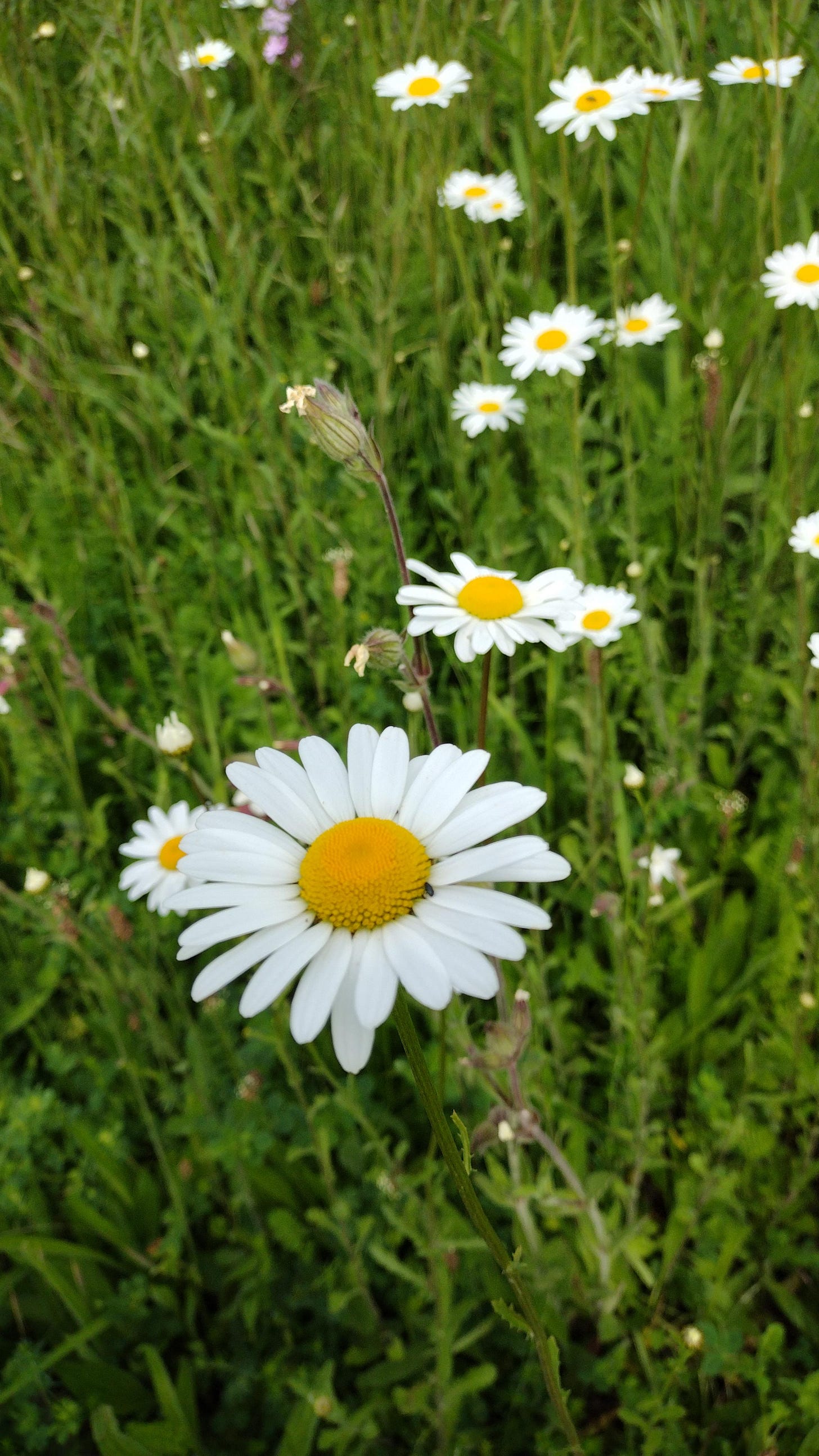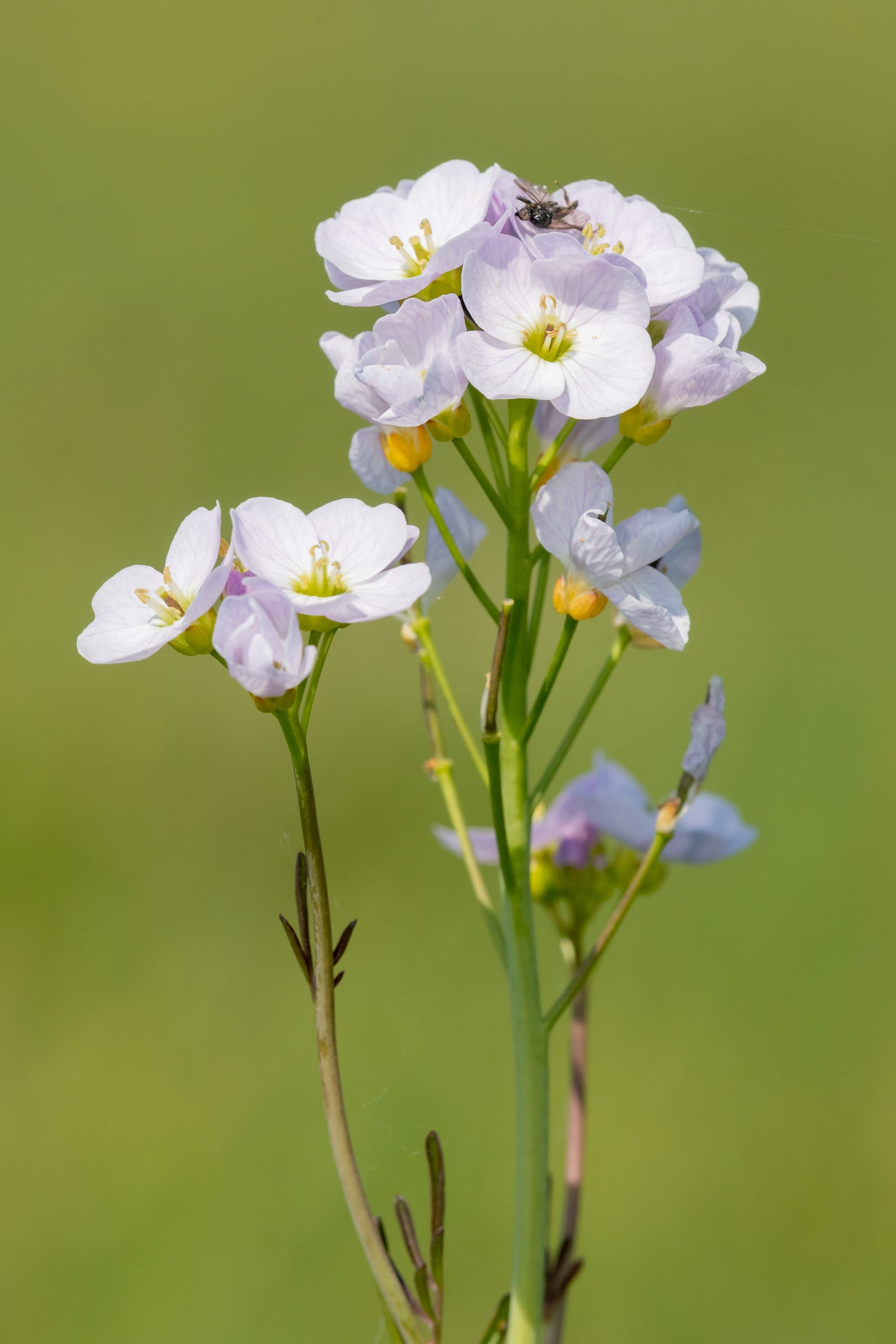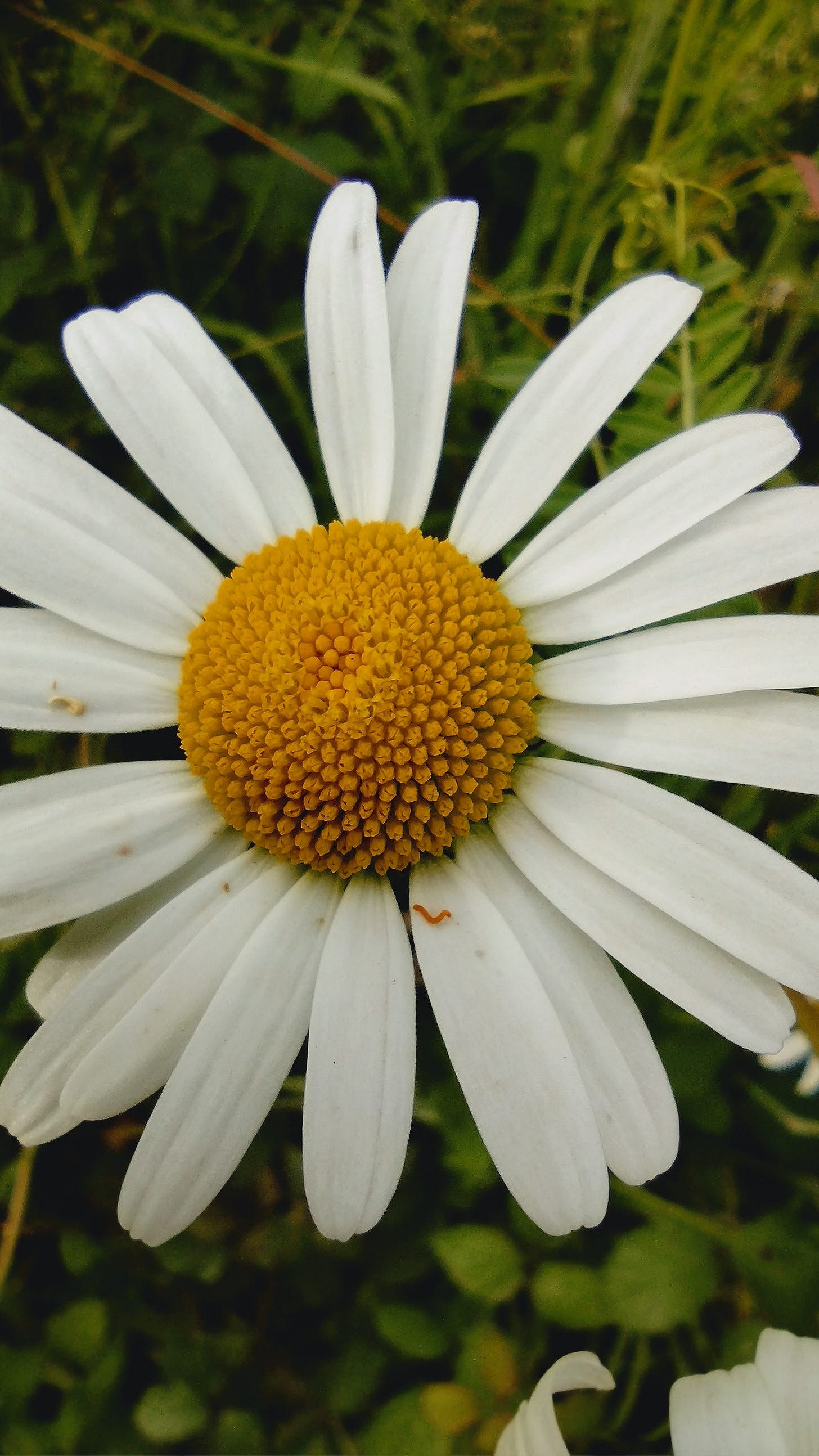Turn your back as spring morphs into summer and greenness intensifies by the minute. Over the past month, sprightly translucent leaves have covered previously bare oaks. Their green seems to radiate with fresh life, but I struggle to convey their colour in words.
This has me wondering. In the UK, a nation in whose climate greenness prevails, why haven’t we invented more words for the colour? So far, I’ve only been able to come up with a meagre few: lime, khaki, avocado, jade, olive, emerald, viridescent… You may know more. But how about the myriad of green tones out there in nature right now? None of the above greenish words define what I’m seeing, and yellowy-green seems such an insipid way to describe the trees’ intoxicating lushness.
Standing triumphant this month against all this green on the roadside verges and roundabouts that have escaped the mower is an ocean of white. Perkily jostling skywards are one of my favourite spring flowers, the ox-eye daisy. Their name refers to their circle of central yellow which could, with a little imagination, resemble the eye of an ox. The name daisy itself is a contraction of the words ‘day’s eye’, referencing the smaller daisy whose flowers open with the dawn.
But ox-eye daisies go by many other names. They’re often known as Marguerites, said to be a reference to Margaret of Anjou, Queen consort of King Henry VI. Her emblem, along with those of the Lancastrian troops in the War of the Roses, featured an ox-eye daisy. They are also called moon daisies, and in Derbyshire and Yorkshire moon pennies. This is possibly because their flowers remain open both day and night, but maybe, too, because the flower was dedicated in Roman Mythology to Diana, the moon goddess.
In medieval times Scots called them gools. Because the flowers grow so vigorously, displacing grazing grass and crops, farmers would employ ‘gool risers’ to remove them from wheat fields and so avoid a tax levied on farms with the most gools in their fields. Native to the UK, this plucky flower prefers disturbed ground, and in fact are so successful they’re considered an invasive species in many countries, including the USA. One flower can produce more than 25,000 seeds, which are able to routinely germinate even after many years lying dormant.
Some people call them mayweed, as the plentiful flowers begin to bloom in May. Others refer to them as maudlinwort or maudlin daisy, names that seem to stem from an association with Mary Magdalen. Other folk names for the plant include dun daisy, dog daisy, butter daisy, midsummer daisy and, in Scotland, horse gowan.
It’s quite a list, but for me, this plethora of names is one of the joys of our native plants. Regional variations, appearance, and their traditional medicinal uses have lent plants an array of nicknames. Take one of the earliest spring flowers, the delicate lilac cuckoo flower. It’s so called because it comes into bloom around the time the first cuckoos arrive and starts to call. Alternative names for the cuckoo flower include lady’s smock - because of the cupped shape of its flower - milkmaids, naked ladies, bog spink, Lucky Locket, bread and milk, pink folly, pig’s eyes and my favourite, cuckoo’s shoes and stockings. Orange-tip butterflies know them as a food source for their caterpillars.
Back to the ox-eye daisy, a flower steeped in legend. It’s been linked to divination, particularly in France. Maybe a younger you once plucked the leaves from a daisy and incanted: ‘s/he loves me, s/he loves me not…’ In folklore, if you picked them with closed eyes, the number of flowers in your hand would indicate how many years until you married. The ancient Greeks dedicated the flower to their moon goddess, Artemis, and historically it’s been used medicinally for female reproductive issues, coughs, and asthma, for relieving bruising and conjunctivitis, as a diuretic, and to ease palsy, sciatica and gout, among other complaints.
The scientific name of the ox-eye daisy, Leucanthemum vulgare, comes from the Greek and Latin, and translates rather uninspiringly as ‘common white flower’. Scientific names were adopted when it became obvious that regional name variations were causing confusion, especially since different flowers often ended up with similar names, depending on the part of the country you were in. They were popularised in the 18th century by Swedish naturalist Carl von Linné. Latin and Greek were used as they were the international scientific languages at the time.
Look closely and you’ll see that the ox-eye daisy’s central yellow eye is comprised of hundreds of tiny flowers clustered together, all holding nectar, irresistible to pollinators. The white surrounding petals are vestiges of original flowers that can no longer reproduce. It seems certain types of beetles adore ox-eye daisies, including tumbling flower beetles, which jump and dive around when threatened, longhorn beetles and snout weevils, a shiny black beetle with a long pointed proboscis.
So if you can, get outside this week and enjoy the swathes of ox-eye daisies blooming right now. They love motorway embankments so they’ll brighten up a dull drive, but, being opportunists, they pop up anywhere they fancy. They’re a feast for the eyes, plucky and tenacious.
See you next month, and thanks for reading :)








My mum was a draughts-woman, and, in her fifties, took up painting and drawing for pleasure. We’d often discuss the colour green, and I remember her complaining that she could never paint a spring tree the colour it really was, as no one would believe her. It was just too blinking green! That’s how I feel about the words conveying green. I’ve now taken to describing them in terms of things they remind me of; tree frogs, pea shoots, emeralds (though, that last one is a bit of a cliche in itself). Maybe we should start making words up? Also, fab daisy info. I didn’t know any of that. 👍
I’ve just spent 10 days in the west of Ireland where the land is too poor to grow crops but hosts a richness of wild flowers at this time of year including the daisy. Daisies everywhere, small and big. A happy flower, I always think, with their vibrant colouring. Love this info, Cathy🙏